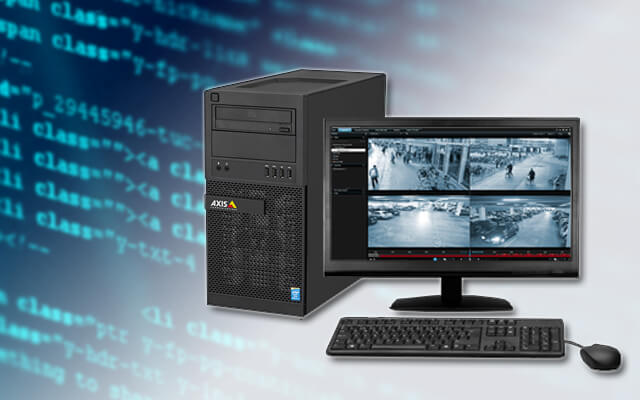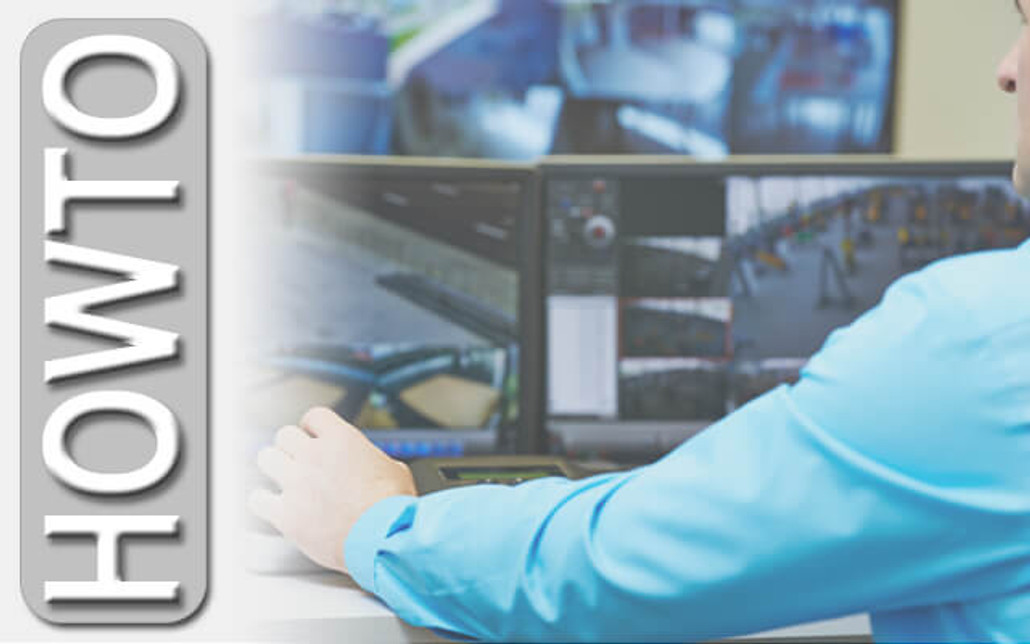Surveillance recordings are largely stored with either an NVR or software-based video management systems (VMS). As web-connected systems, they often have updates which you can download.
Updates take time and effort to be installed, which requires resources from your business. This begs the question are they worth it?
They absolutely are, and here are our top five reasons to prioritise network video recorder and video management system updates.
Reasons to update your NVR or VMS
In short, when you keep your security system in order, this makes sure it’s working at its best. Here are the reasons why in detail…
1. Cybersecurity
New vulnerabilities in software and firmware are discovered all the time. There are cyber security criminals who focus on breaking into common software and hardware with remote access.
Manufacturers fix their systems and release patches or new firmware once a vulnerability is found. Unfortunately, they’re not all proactive. Some manufacturers are quicker at finding vulnerabilities than others and some are downright poor.
If you don’t apply patches, your system will become vulnerable to both manual and automated exploits. Once vulnerabilities are in the public domain cyber attacks, especially automated ones, quickly follow.
Vulnerabilities can be exploited both remotely (if your system has remote access) or locally (perhaps from an infected computer). A good firewall policy is not enough to mitigate the risks.
s CCTV systems usually contain PII (personally identifiable information) you are obliged to keep your system secure under the EU GDPR legislation. The level of fines from this legislation should be enough of a reason to keep your system up-to-date.
2. Bug fixes
Bugs can exist in a system and not be immediately obvious.
For example, one VMS system had a hidden bug which deleted all footage when certain criteria were met. The manufacturer patched the bug quickly on discovery – but we still see sites running the compromised version.
As code is written by humans, it isn't perfect. To be on the safe side keep your system updated with the latest major versions and minor updates and patches.
3. Performance improvements

Operating systems like Linux and Windows are updated frequently. The VMS or NVR running on the operating system should also be developed to work with the system updates. Enabling you to take advantage of the improvements that OS updates often bring.
Performance improvements are a big deal with video.
Video is hard to process, store and manage. Therefore, any performance improvement or enhancement is welcome and some can make a huge difference to the system. Benefits could include:
- Fewer dropped frames
- Less storage use
- Less RAM or CPU use
- Faster access to the system
Why would you not want that?
4. New camera support
Rarely can you add new devices to an old system and expect them to work immediately.
Typically, a range of cameras are supported ‘out-of-the-box’ and more models are added to the supported devices list over time. This extra support usually comes in the form of drivers, device packs, camera packs, system patches or firmware updates.
Drivers are worth installing when they come out as they often contain bug fixes for older cameras.
Even the standards are evolving. A device using ONVIF (for instance) may work initially but won’t work fully with a later version of the standard.
5. Camera bug fixes and new features
As with NVRs and video management software, cameras themselves can be updated.
Manufacturers frequently release new firmware. Sometimes they contain critical security and bug fixes. Occasionally firmware releases contain handy new features that may well make a huge difference to your surveillance operation.
New camera firmware updates can resolve known issues, plug security holes and incorporate new detection analytics. Updates may even open up additional features in the VMS or NVR. For example, when Axis released VMD 4 (a detection analytic) it was a superior detection method to VMD built-in to most VMS. Those systems taking advantage of this would have seen fewer false alarms, a reduced storage requirement and better general performance. Sadly, most systems did not incorporate this.
Some manufacturers have tools you can download which make the process of keeping large estates of IP cameras up-to-date easy. For example, the Axis Camera Management software.
Your camera is just as important as your recording system, so should be updated too.
Most surveillance systems are fallow
It’s a sad fact that once systems are installed, most are left to go fallow. We first spoke about this in 2009.
Why touch something that isn't broken, right? Wrong.
To ensure you get the best from your system and its cameras, you should keep the surveillance system up-to-date. An up-to-date system is more robust and often delivers new features.
It takes time, resources and clear ownership of and responsibility for the system to keep a security system up to date. If you lack even one of these it will often lie fallow outside of general ongoing usage.
It does take time to keep a system current, but the benefits of doing so are huge. Updates often bring in new features that can make a difference and contribute towards efficiency savings within your organisation.
Ownership is a key aspect. Someone needs to ‘own’ the system and ‘take the lead’ on its use and progression over time. If you’re the owner, it’s time to create a plan to keep your security system current, if you haven’t already.
That said, you should take a cautious approach to applying updates. Check before you upgrade to ensure that you can be upgraded directly to the latest version. In some cases, there may be an intermediate step, especially if you are a few versions behind.
Applying patches and updates is a time-consuming process and most organisations don't or can't make the time for this, and for dealing with issues that result, so finding a partner to support a critical system is itself crucial. Let experts on the system maintain it and keep it working for you. We have CCTV service level agreements you can take advantage of which enable you to effectively stop worrying about all of these aspects.
Should you pay for support?
There are two types of software on the market. Software that you get free and software that you pay for.
Paid software usually comes with support for a period of time. Once that time runs out, you will often no longer gain access to patches, bug fixes, drivers or other improvements. Paid software often comes with an extendable support contract of some kind (for instance Milestone CarePlus with Milestone XProtect). Extending your support allows you to take full advantage of not only software support, but also:
- Security patches
- Bug fixes
- Performance improvements
- New features
Free software comes with no support and, I believe, represents a danger to your surveillance system for the reasons above.
Support comes with a cost, so free software usually comes without support of any kind. It is not in a manufacturer’s interest to respond quickly to security vulnerabilities or fix bugs as it makes them no money.
Free is a fallacy. Don’t rely on it.
Conclusion
For your surveillance system to serve you well, you need to dedicate time and resources to it. Regular updates improve performance, fix bugs and alleviate cyber security concerns, as well as enable support for new cameras.



